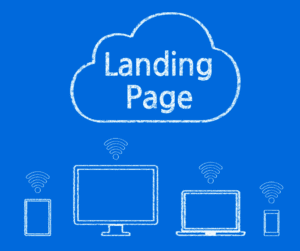Google ads or known as paid search results are one of the most effective ways to drive traffic and increase your brand visibility.
However, they can be challenging when you come across small issues like not knowing if your ads are showing up as expected or if your landing page is optimized for the right keywords.
If you’re looking to improve your campaigns, read on as we share 5 effective ways to manage Google Ads for better Google Search Engine Optimization (SEO).
Understanding your target audience important way

One of the first steps in managing your Google Ads for better SEO is to understand whom you’re targeting with your ads.
There are a few ways to research your target audience, and one of them is to look for competitors.
In fact, we recommend you look at your competitors’ landing pages as well as their keywords, products, and ads to gain a better view of your ideal customers.
You can also use tools to analyze your customers like Followerwonk, Hotjar, and Customer.io to get a more in-depth view of your customer’s interests, buying habits, and more.
Another important step is to understand your business’s target audience. For example, you might want to target people who are looking for a weight loss product, but someone who is also interested in healthy eating habits might not feel the same way.
However, targeting a slightly different audience might work best for your brand, so it’s important to understand your customers’ needs and wants.
Analyze search queries

Next on our list is to analyze your competitors’ search queries to get a better understanding of what people are searching for when they come across your ads.
You can also use Google’s Keyword Planner to get an overview of the most frequently searched terms.
You can also look at search volume to get a better idea of what people are searching for. To analyze your competitors’ search queries, you can use tools like SEMrush Keyword Research Tool, Google Keyword Planner, or Word Tracker.
Another way is to use Google’s Keyword Planner to get an overview of the most frequently searched terms. You can then use these terms as keywords for your landing pages, ads, and products.
Track your performance

Next on our list is to track your performance. There are many ways to track your performance, but one of the best is by using Google’s Keyword Planner.
You can also use tools like SEMrush to track your competitors’ performance.
Another way to track your performance is by using a third-party tool like HubSpot’s Keyword Tool.
Another way to manage your campaigns is to track keyword cannibalization, which means seeing if your competitors are also using the same keywords.
You can use a keyword tracking tool like SEMrush to see this, or simply use the Google search console to see which keywords your competitors are using.
Refine keyword targeting

Next on our list is to refine your keyword targeting and make adjustments as you see fit.
For example, you can go back to your keyword analysis and see which keywords your competitors are using, and then use those keywords as your new keywords.
You can also use the keyword suggestions in Google’s Keyword Planner. Another way to refine your targeting is to choose the right ad formats.
You can use ad formats like video ads, rich media ads, and even display ads.
Google ads allow for a lot of different types of ads, so make sure to test them out to see which ad format works best for your brand.
Optimize your landing page

Next on our list is to optimize your landing page. After you’ve refined your keyword targeting and optimized your landing page, the next step is to optimize your landing page.
There are a few ways you can optimize your landing page. One way is to use a landing page builder like Leadpages or Unbounce.
Another way is to use a tool like HubSpot’s Landing Page Editor. Another tip is to use the right call-to-action (CTA) on your landing page.
Make sure your CTA is directed at your ideal customers and matches the action they’re taking on your page.
Monitor your competitor’s activity

Finally, to manage your campaigns better, you need to stay on top of your competitors.
There are a few ways you can do this. One way is by using the Google Ads Competitor Analysis feature.
If you have access to the webmaster’s tool, you can use that too to see your competitors’ URLs, click-through rates (CTR), ad copy, rank, and more.
The last tip we have for managing your campaigns is to use a tool like SEMrush to stay on top of the latest changes in Google Ads.
The quickest way to see if Google Ads are experiencing any changes is to use a tool like SEMrush, as it gives you real-time updates.
Summary
Google ads are an effective way to drive traffic, but they can be challenging when you come across issues like not knowing if your ads are showing up as expected or if your landing page is optimized for the right keywords.
With these 5 tips, you’ll be well on your way to managing your Google Ads better for SEO. Google ads are an effective way to drive traffic, but they can be challenging when you come across issues like not knowing if your ads are showing up as expected or if your landing page is optimized for the right keywords. With these 5 tips, you’ll be well on your way to managing your Google Ads better for SEO.
Perfect Digitals is a digital marketing agency with affordable prices. We can help you in creating and run effective Google Ads, along with other digital marketing services.
